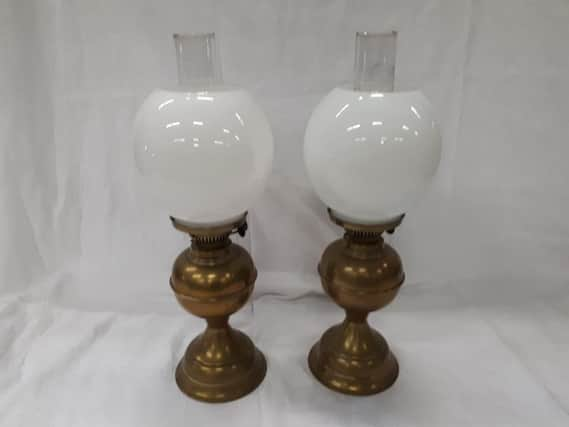Brighten up your home with these fetching antiques...


The days are getting longer, but by the time I get home we’re still switching on the lights, an action so easy that we don’t even notice. Lighting the home used to require considerable time and effort, but it also created some beautiful artefacts that we appreciate to this day.
Light has always been a focal point of the home, from cave fires and torches to this week’s feature: oil lamps. The earliest oil lamps date back 15,000 years: scallop shells or hollowed stones filled with animal fat. Early civilisations made lamps from baked clay or terracotta, developing into the classic ‘Aladdin’ style iron or pewter lamp design which endured for centuries.
Advertisement
Hide AdAdvertisement
Hide AdIn the late 1700s, Aime Argand, a Swiss chemist, perfected a lamp design without a free floating wick, creating the iconic lamp shape with tall glass chimney. From 1800 improvements in manufacturing meant glass lamps became increasingly cheap and gave people a wider choice of lamp designs to fit their personal taste.
Trimming the wicks and filling the reservoirs of the oil lamps was a daily Victorian chore. Once gas and electric light became common, oil lamps became purely ornamental. To this day they remain delightful collectables; their lovely soft light reflecting life hundreds of years ago.
Matching lamps in good condition can be rare; this tall, handsome pair in working order are available in the centre for £45. A working oil lamp will have increased value over its purely decorative counterpart. Dating can be tricky, follow guides to changing designs and fashions, and look for patent dates or manufacturers’ marks.
Genuine ‘antique’ lamps should date back at least 100 years. Obviously damage can reduce value, but many collectors prefer original condition with genuine age marks rather than a bright, shiny restored lamp. Bases are often brass or bronze, but can even be silver or gold. Serious lamp hunters even carry a strong magnet as solid gold, silver, brass, copper or bronze are not magnetic.
Advertisement
Hide AdAdvertisement
Hide AdA magnet sticking to the lamp base indicates plated metal, not solid. Prices will also be higher if the lamp consists of parts that are in themselves collectable, like original cranberry glass shades. So, next time you flick a light switch, appreciate the cleaning, filling and trimming we might have been doing only a few generations ago.